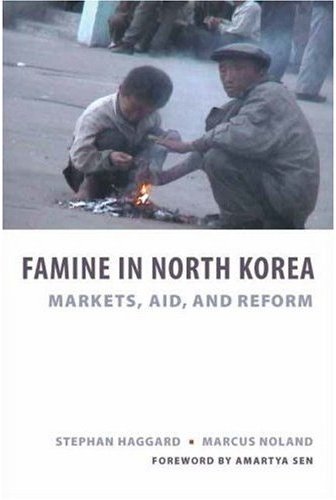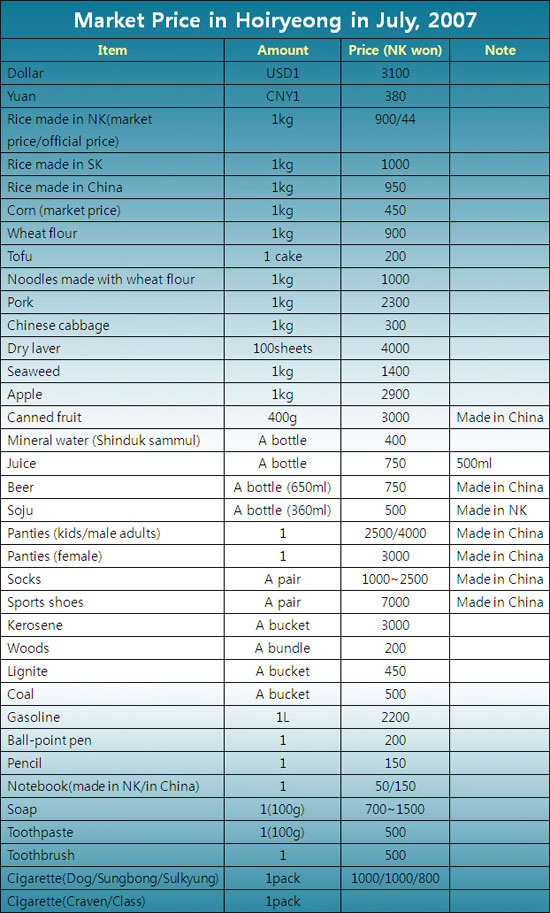Daily NK
Park Young Nam
7/14/2007
Even in North Korea, there are special schools for the gifted and talented. In particular, talented students are selected for high schools and special education. The writer also attended a special high school while in North Korea.
I enrolled at an elementary school in `92. Since 3rd I was taught separately and received special education. Under the care of my class teacher, I studied math and nature subjects in detail until 6 o’clock at night.
After completing 4 years of elementary school, I was selected as a representative for Musan and entered Chongjin No.1 High School in April `96. No. 1 high schools are special schools for the talented and are located in Pyongyang and each province.
I arrived at Chongjin No. 1 High School to find many other students as bright as me. On top of that, these students all came from good backgrounds.
Undoubtedly, I was no different. My father worked for the People’s Committee and my mother was a doctor. At the time, my family lived an abundant life and had all the necessary electrical goods such as a TV and refrigerator.
High school days, shirking going to school
Unlike average high schools, we often missed classes and went on day trips. Again, punishment is severe at average high schools but we were not treated to harsh punishment because of our respectable backgrounds. Even if you were caught drinking alcohol on the streets and taken to the police, you were let go once you informed them that you attended “Chongjin No. 1 High School.”
Despite playing like this, I studied very hard at the end of each month in order to sit for the exams. I studied 10 days prior to each exam. During the summer, I could study a lot as the days are long, however in the winter, I couldn’t study because the sun set early and there was no electricity.
The winter was the worst as there was no central heating in the dormitories. Even if you wanted to cook rice, you couldn’t. The moment you placed a heater, which was made with twisted nicrome wire, in the socket and, the dismal light only became dimmer and if you put three of these wires into the wall socket the fuse went out. In the end, I became so frustrated that I shoved a spoon into the fuse socket only to find that it didn’t black out but operated fine.
Expelled for watching a video
That’s how I spent my days at school. Then things began to go wrong from about 4th grade.
In February `99, after I had begun 4th grade and sat for an entry exam for Pyongyang No. 1 High School. I sat for the test with the desire to go to a slightly better school but it ended in failure. At the time, I fell into misery and for a while I went around playing and my grades continued to drop.
In August `99, I went to visit a friend’s home who had come from Hoiryeong with 4 other mates. He had a TV and video player in his home. To be honest, the house had been under inspection by the National Security Agency because of this, but at the time, I didn’t even consider this. We watched three videos at that friend’s home.
I watched the old South Korean drama “Men from 8 Provinces,” and other American movies, “Titantic” and “Six Days, Seven Nights.”
I was alarmed after watching “Titantic” and “Six Days, Seven Nights.” The foreign movies were really enjoyable but what clearly remains in my memory is the thrill I had from simply watching the films. We watched the complete and unabridged version of Titanic, even the scene where the two main characters have an affair in the car. As part of the audience, I found this shocking.
While watching these characters traveling freely in the movie, I thought, why can’t we travel on boats like that and why can’t we play freely like that. It was inevitable that I felt culture shock.
However we were caught and were sent to the detention centre in early October. All 4 of my friends who watched the videos were also caught and we sat in the centre for about 10 days.
I wasn’t even sure what the crime was, but I had a feeling it was because we had watched foreign movies. Whether or not it was because we were young, we were let go after a few beatings with something like a broomstick.
After returning to school, there was no reason for us to be the centre of attention. We didn’t tell anyone where we had been but I think everyone generally knew. At the same time, my grades were really low and in the end I was expelled from school.
From expulsion until arriving in South Korea
Following that incident, I went to live with relatives in Pyongyang for 1 year.
I had a business in Pyongyang. When my mother brought clothes from China, I sold them in Pyongyang. With this money, I bought rice and then made profits by acting as an intermediary and selling the rice to Musan. Compared to Pyongyang, rice was expensive in Musan and as a result, I was able to reap in a lot of profits.
However, I couldn’t continue to do this. I felt bad living with my relatives. In the end, I returned to my home in Musan.
Having returned to Musan, I began to associate with children from the wealthy class and one day heard that they traveled in and out of China and in 2001, I crossed over to China in search of a better life.
I crossed the borders, not because I was hungry or because I was in danger. I was merely worried about my uncertain future and found living in North Korea suffocating. I yearned for a more abundant life.
Currently, I am preparing to enroll at POSTECH. However, for the 5 years since my expulsion, I have not had any opportunity to study while traveling from Pyongyang to China, then Korea. Re-starting my studies is not easy. The time I lost while defecting is such a shame.
Studying is something I had forgotten for a long time. I must acclimatize myself to an education system very different to that of North Korea. Nonetheless, I believe I will be able to do well if I try very hard.


